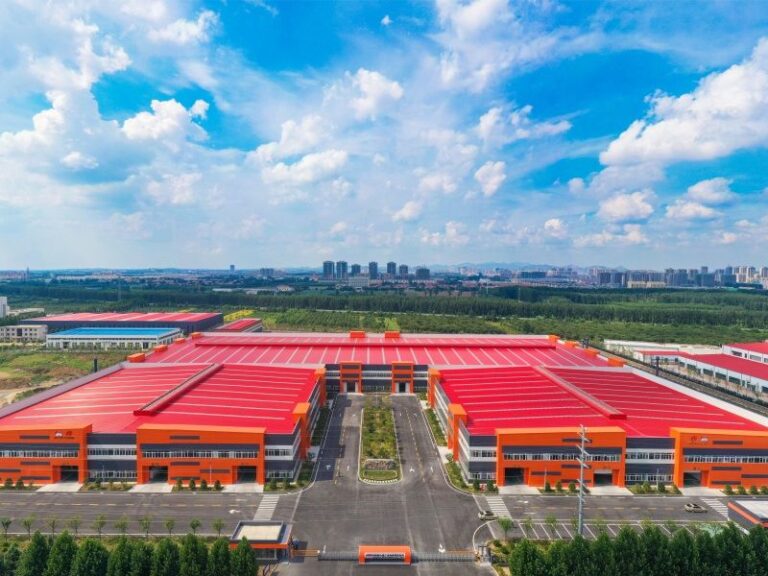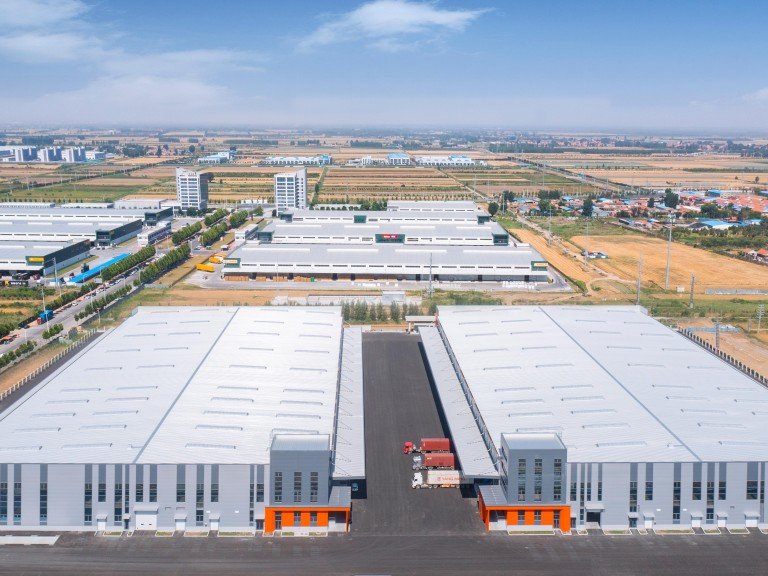Climate change poses threats of drought, storms and rising sea levels. And with the U.S. spending more than $400 billion a year on building energy, saving energy is a matter of urgency. Metal buildings, with their superior energy efficiency, are an effective choice to meet this challenge. Xinguangzheng will help you achieve your energy efficiency and sustainability goals.
Metal buildings play an important role in modern architecture and are widely used in industrial, commercial and residential applications. With the growing global concern for energy efficiency and environmental protection, more and more people are beginning to pay attention to the question, ‘Can metal buildings save energy?’
This is a critical question that directly affects the long-term cost and environmental impact of buildings. In this paper, we explore the energy efficiency of metal buildings, focusing on their energy-saving benefits, challenges, and how their performance can be further improved through advanced technologies such as solar integration. Through case studies and comparative analyses, we will demonstrate the huge potential for energy efficiency in metal buildings and why choosing Xinguangzheng will be a smart choice.
Table of Contents
Energy Efficiency Advantages of Metal Buildings
Metal buildings offer significant advantages in terms of energy efficiency. Metal roofs and walls have excellent heat-reflective properties, reflecting solar radiation and reducing heat absorption. This means they can significantly reduce cooling requirements, which is especially important in hot climates. With a heat reflectivity of up to 70 per cent, metal materials can reduce air conditioning energy consumption.
Metal buildings also have excellent temperature regulation. Their high R-values provide excellent thermal insulation, helping the building maintain a stable temperature and improve comfort. In addition, metal building designs often feature multiple windows and skylights. This reduces artificial lighting by utilising natural light, which further reduces power consumption. The use of prefabricated components greatly reduces energy consumption during the construction process.
Steel is highly sustainable. The metal is 100 per cent recyclable and between 27 and 79 per cent recycled material is used. This practice not only reduces the waste of resources, but also significantly reduces the burden on the environment.
The energy efficiency of metal building materials also excels in the production process. Compared to conventional building materials, metal buildings use about 60 per cent less energy to produce. This makes metal buildings more energy efficient throughout their lifecycle and helps reduce carbon emissions.
Metal buildings are also ideal for solar integration. Metal roofs make it easy to install solar panels to provide clean energy to the building, reducing reliance on traditional energy sources and lowering the carbon footprint.
Xinguangzheng specialises in providing energy efficient metal building solutions. From design to construction, we pay attention to every detail to ensure that buildings are optimised for energy efficiency and sustainability.
Customize Your Steel Building
Start your project today with a tailored price estimate for your steel building.
Get Your Steel Building Quote ➜
Challenges and Responses to Energy Efficiency in Metal Buildings
While metal buildings have many advantages, they still face several challenges in maintaining energy efficiency. These challenges are particularly acute in extreme climatic conditions. Fortunately, the problems can be effectively addressed through sound design and technical means.
Air leakage: Perforations in windows, doors and roofs of metal buildings are common weak points for air leakage. Air is lost through these areas, affecting the stability of indoor temperatures and increasing energy consumption.
Insulation: Metal has high thermal conductivity and is prone to temperature fluctuations. Air leakage problems in areas such as windows, doors and perforations can further exacerbate temperature fluctuations. Humidity condensation also needs to be guarded against, as it can affect structural stability and air quality. We recommend the use of highly efficient insulation materials such as polyurethane foam or fibreglass to enhance the insulation effect.
Moisture Management: Metal surfaces are prone to condensation when temperatures change rapidly, increasing moisture problems. This can damage the building structure and affect indoor air quality. Effective moisture management requires good ventilation systems and moisture barriers.
Temperature control: Metal buildings experience rapid temperature changes, leading to fluctuating indoor temperatures that can affect comfort and increase energy consumption. Advanced temperature control systems can help stabilise the indoor environment and reduce energy consumption.
Strategies to Improve the Energy Efficiency of Metal Buildings
Maximising the energy efficiency of metal buildings requires strategic design and construction. Here are some key strategies that are effective and can significantly reduce energy consumption and improve comfort.
Quality Insulation and Sealing: Quality insulation and sealing is critical. The use of insulated windows, skylights and cool roofs can effectively reduce heat transfer. Cool roofs can reduce heat absorption by as much as 30 per cent, helping to keep indoor temperatures stable. Prefabricated components also help save energy and reduce waste. Insulation can be further enhanced by the use of efficient materials such as polyurethane foam and fibreglass.
Cold Metal Roofs: The use of cold metal roofs can significantly reduce heat absorption in buildings. This reduces cooling requirements and helps save energy. Not only do they reduce temperatures, they also have a LEED-certified cool-coloured coating, which increases a building’s energy efficiency.
Prefab Advantage: The use of prefabricated components reduces the amount of waste generated during building construction, saves time, and reduces energy consumption. This efficient construction method helps reduce energy consumption throughout the building process.
Advanced Ventilation: A proper ventilation system ensures indoor air quality and helps to regulate the temperature, reducing the reliance on air conditioning. Combining natural and mechanical ventilation. Hot air can be exhausted during the day and cool air can be brought in at night, further optimising energy efficiency.
Smart building technology: Smart building technology is playing an increasingly important role in improving energy efficiency. Internet of Things (IoT) devices and smart control systems enable more precise energy management. For example, smart thermostats can automatically adjust the temperature according to the real-time environment, reducing unnecessary energy waste.
Case Studies of Energy-Efficient Metal Building Projects
Here are two successful examples of our energy-efficient metal buildings: the Plant in Algeria and the Drug Warehouse in Algeria.
Plant in Algeria: This project covers 2,520 square meters, with a building dimension of 105x24x11 meters. The main steel structure uses welded H-shaped steel, coated with two layers of grey paint for durability and corrosion resistance. The roof and walls use 50mm EPS composite panels, with galvanized purlins to enhance energy efficiency. These insulation materials help maintain stable indoor temperatures, even in extreme climates, reducing energy consumption.

Drug Warehouse in Algeria: Located in Oran, Algeria, this 9,776-square-meter warehouse uses glass and aluminum glass curtains for the front desk and office, enhancing both aesthetics and energy efficiency. The careful selection of materials and design ensures a suitable storage environment while significantly reducing energy consumption.

Energy Efficiency Comparison Between Metal and Traditional Buildings
When comparing energy efficiency, metal buildings stand out against traditional brick-and-mortar structures.
Energy Consumption: Metal buildings, with their thermal reflection and efficient insulation materials, typically have 20% to 30% lower cooling demands in summer. In winter, modern insulation materials help maintain warmth, reducing heating needs. Traditional buildings, however, often struggle with temperature control, leading to higher energy consumption.
Long-Term Costs: Over time, metal buildings are more cost-effective. Their durability reduces the need for repairs, and lower energy consumption leads to reduced operational costs. Over the building’s lifecycle, metal buildings can save 10% to 15% in total costs compared to traditional buildings.
Environmental Impact: Metal buildings also have a lower environmental impact. Reduced energy consumption lowers carbon emissions, and metal’s recyclability minimizes waste when the building is eventually demolished. Traditional buildings, with lower recycling rates and higher waste generation, have a greater environmental impact.
Customize Your Steel Building
Start your project today with a tailored price estimate for your steel building.
Get Your Steel Building Quote ➜
Xinguangzheng’s Energy-Efficient Metal Building Solutions
Xinguangzheng Group focuses on delivering energy-efficient metal buildings. We customize designs to match the project’s climate, ensuring optimal energy efficiency. In hot climates, we use reflective roofs and high-quality insulation materials to reduce air conditioning needs; in cold climates, we enhance insulation to minimize heating demands.
We also integrate smart building technologies, optimizing real-time energy use with IoT and smart control systems. These technologies not only improve energy efficiency but also enhance comfort, further reducing energy consumption.
Moreover, we adhere to international energy efficiency standards, like LEED certification, ensuring that our buildings meet the highest green building and energy-saving criteria. Xinguangzheng Group’s metal buildings are not only energy-efficient and environmentally friendly but also durable and cost-effective, helping customers achieve long-term cost savings and sustainability.
FAQ
Do metal buildings save energy?
Yes, metal buildings have strong energy-saving potential, especially when using efficient insulation materials and smart control systems. The thermal reflection properties of metal roofs and walls reduce cooling demands, and modern technologies like solar integration further lower overall energy consumption.
What are the disadvantages of metal buildings?
Disadvantages of metal buildings include temperature fluctuations due to high thermal conductivity, moisture-induced condensation, poor acoustic insulation, and high initial costs.
Is it worthwhile to insulate metal buildings?
Yes, insulation can effectively reduce temperature fluctuations, save on energy costs, and improve comfort. And it pays off in the long run.
Is it cheaper to build a metal or wood building?
Metal buildings have a higher initial cost, but their durability and low maintenance costs make them more economical in the long run.
How can design improve the energy efficiency of metal buildings?
Design plays a crucial role in energy efficiency. We recommend using efficient insulation materials, designing effective ventilation systems, and integrating smart technologies. Building location, orientation, and shading design also impact energy efficiency. Xinguangzheng Group provides customized design services to ensure optimal energy-saving results.
What are the requirements for energy efficiency certification for metal buildings?
Metal buildings can achieve various energy efficiency certifications, like LEED and China Green Building certification. These require specific energy-saving standards in design, construction, and operation, including efficient energy use, renewable energy integration, and eco-friendly materials. We follow these standards to ensure our buildings are both energy-efficient and meet industry-green building requirements.
How does the energy-saving effect of metal buildings compare to traditional buildings?
Metal buildings typically outperform traditional structures in energy efficiency. With better thermal reflection and insulation materials, they handle cooling and heating needs more effectively. Additionally, metal buildings have lower long-term costs and less environmental impact, offering greater sustainability and cost-effectiveness.





